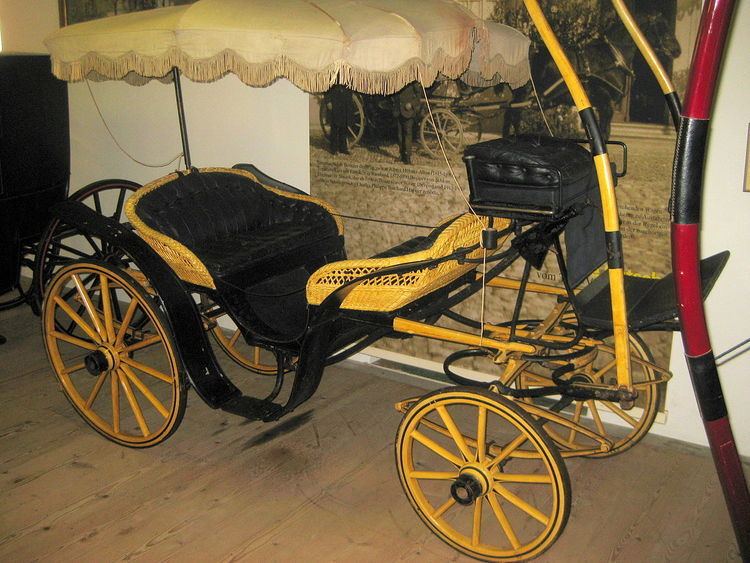 | ||
A vis-à-vis is a carriage in which the passengers sit face to face with the front passengers facing rearward and the rear passengers facing forward. The term comes from the French vis-à-vis, meaning face to face. These carriages are still commonly made by Amish carriage makers in the midwestern United States. Also in the Western world, the vis-a-vis is the most common type of carriage style used to cart tourists and leisure seekers in downtown urban settings.
Contents
Examples
The following types of carriage had vis-à-vis seating:
Automobiles
Vis-à-vis automobiles were popular in the early history of motoring. These were driven from the forward-facing rear seat, with front passengers sitting ahead of the steering controls and facing the driver. Passengers in the front seat would obstruct the vision of the driver in the rear seat, and the style fell out of favour before 1905.
